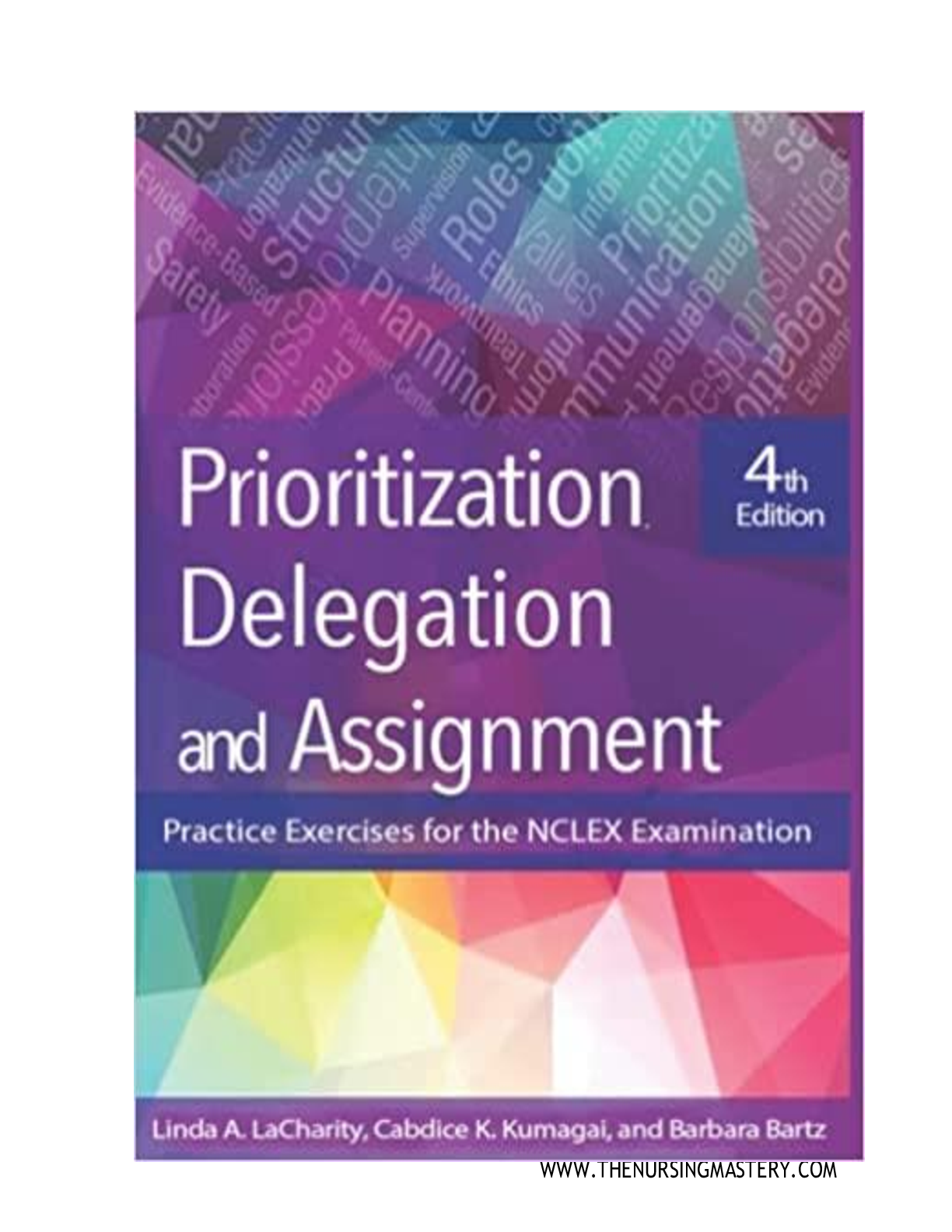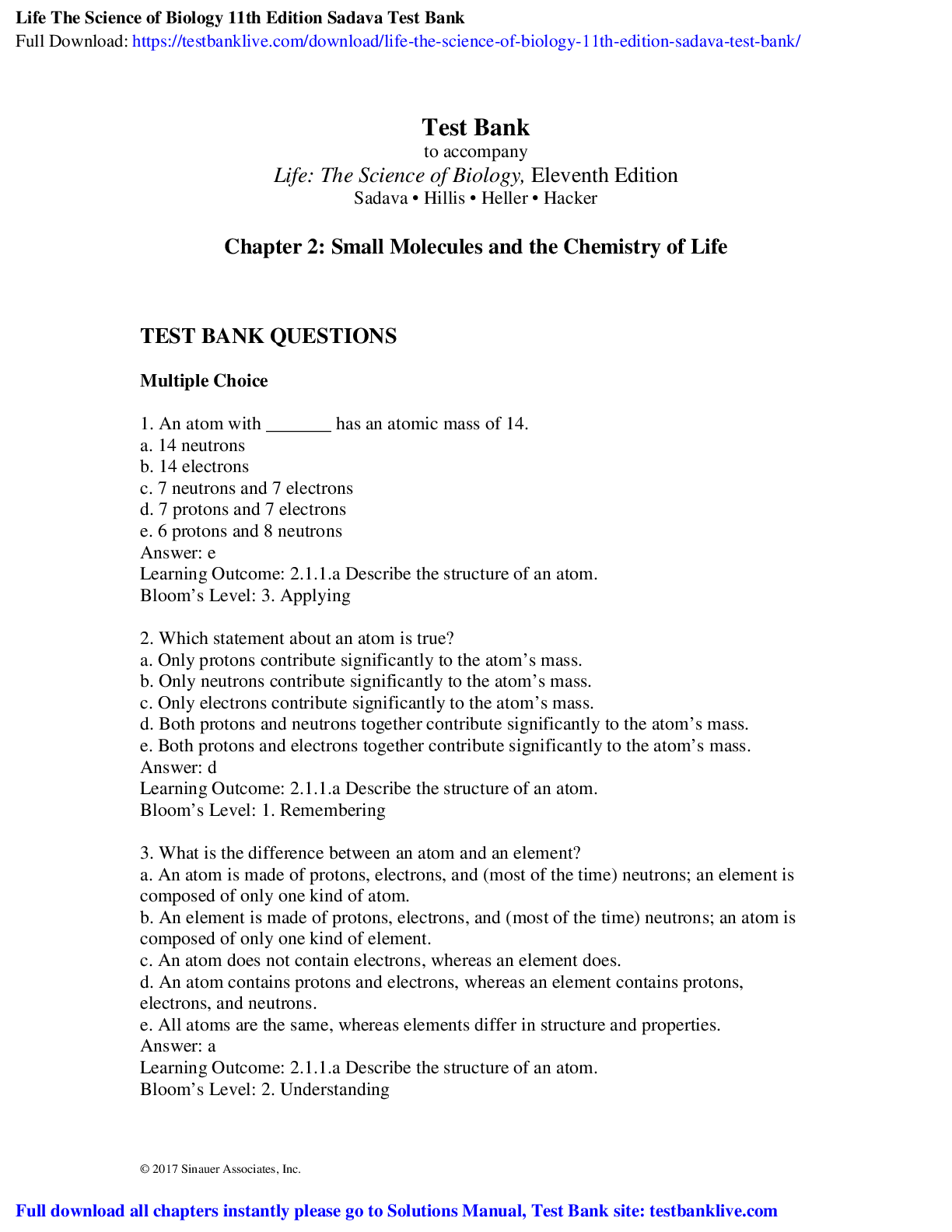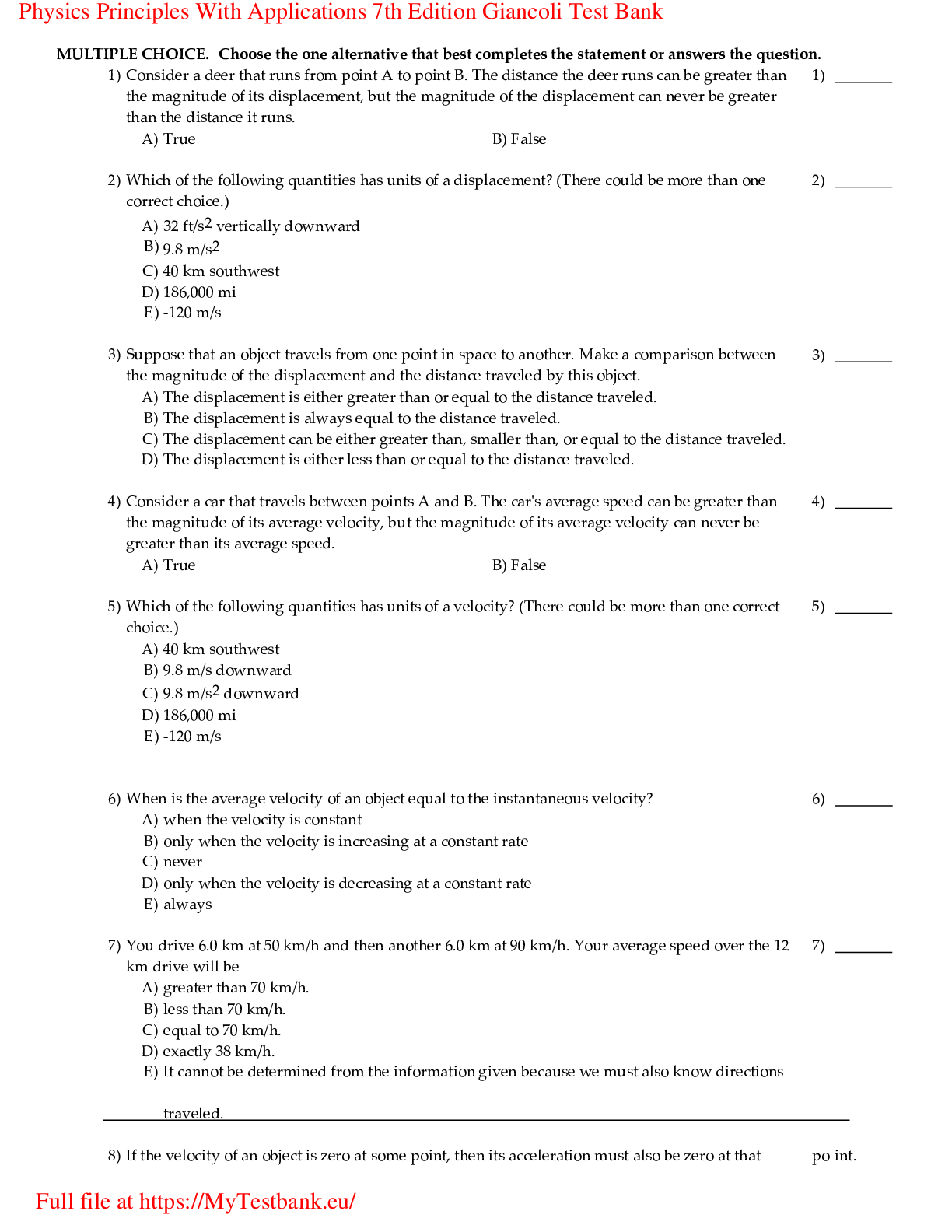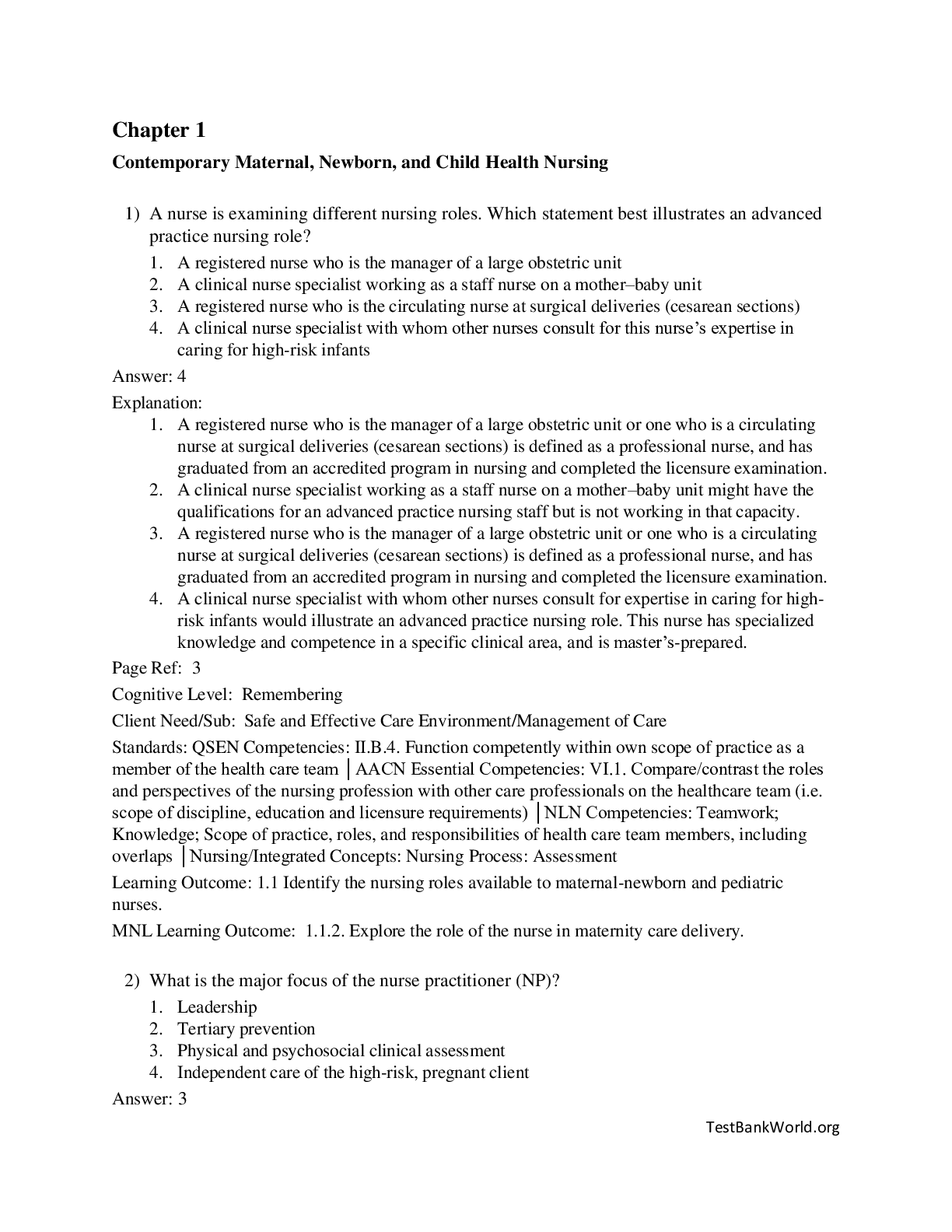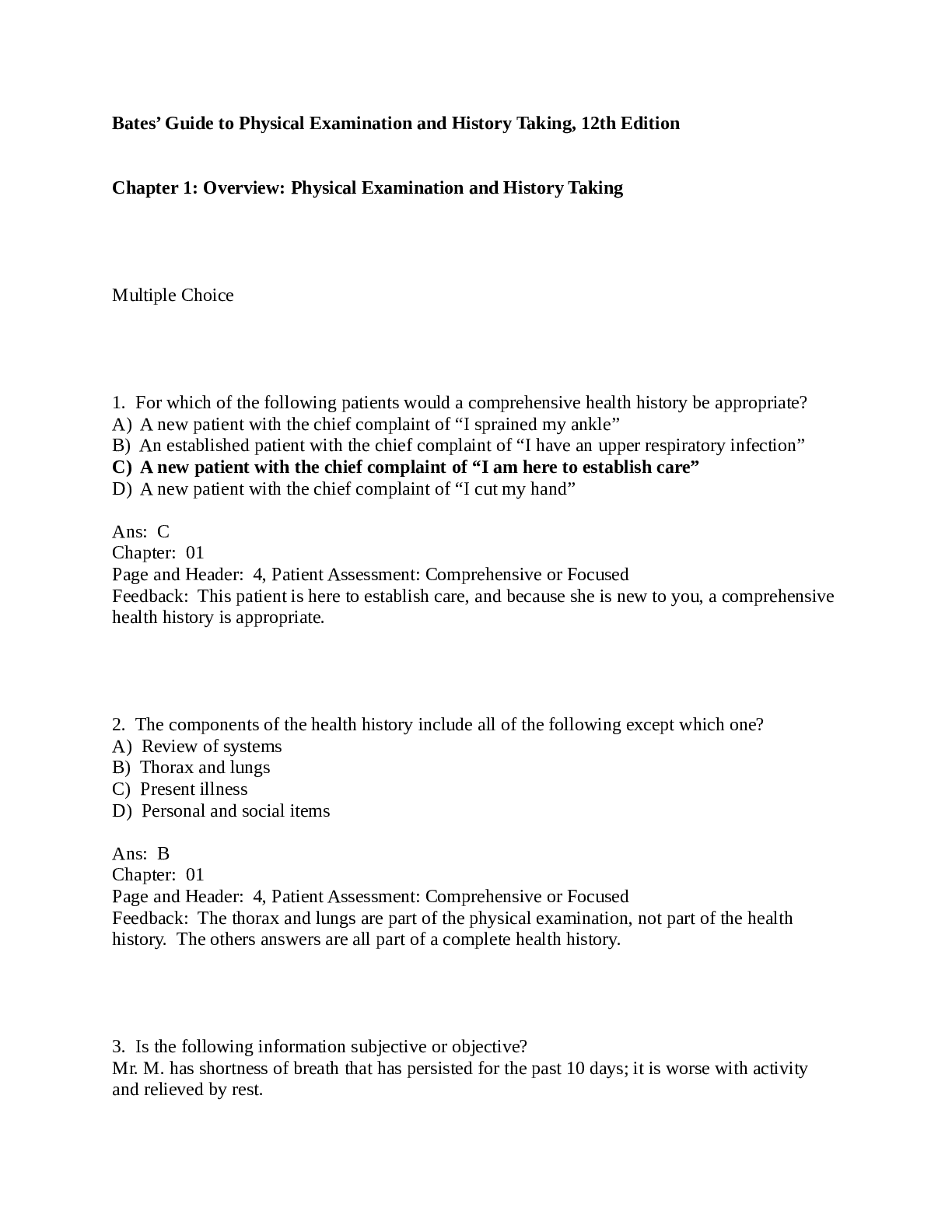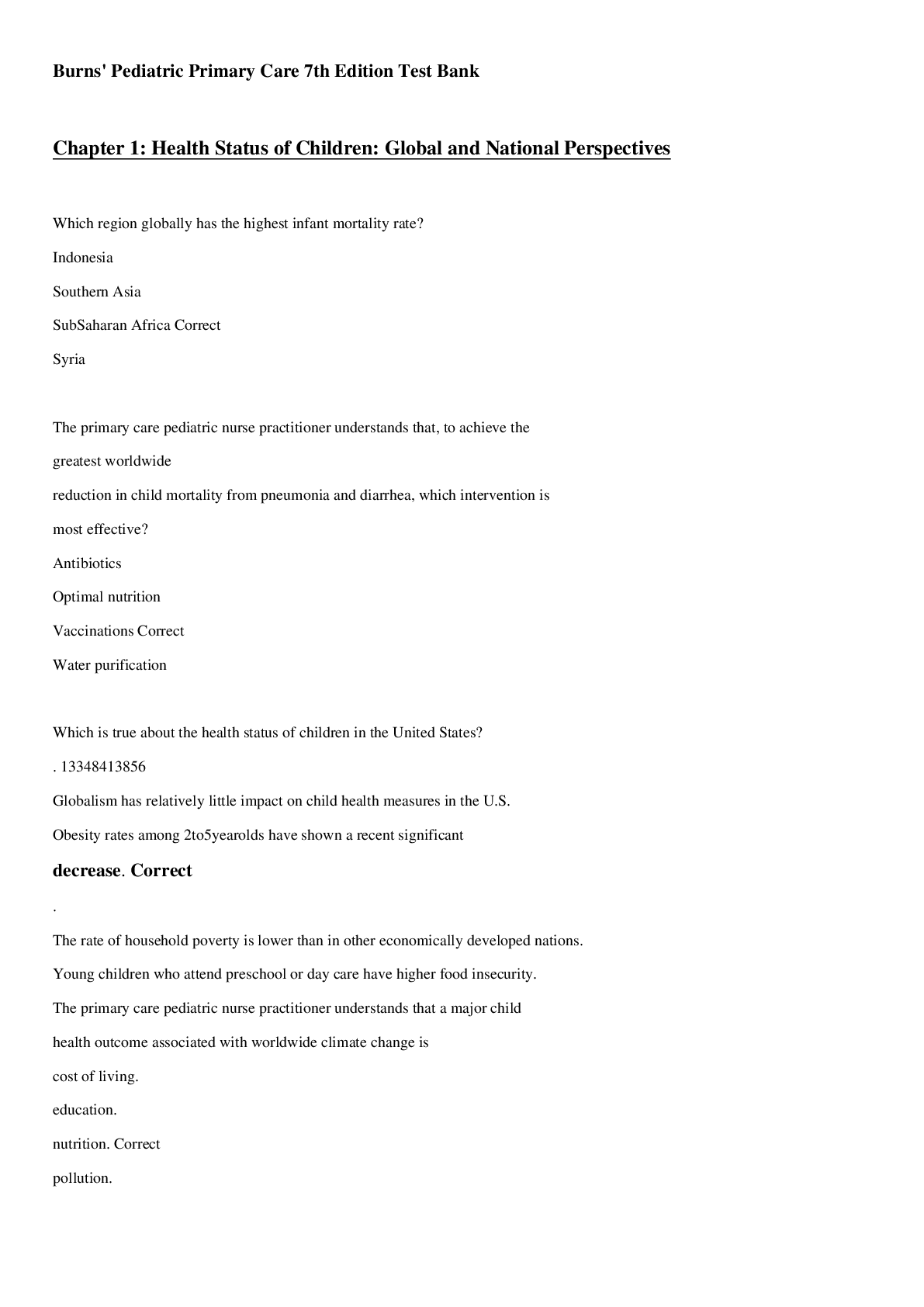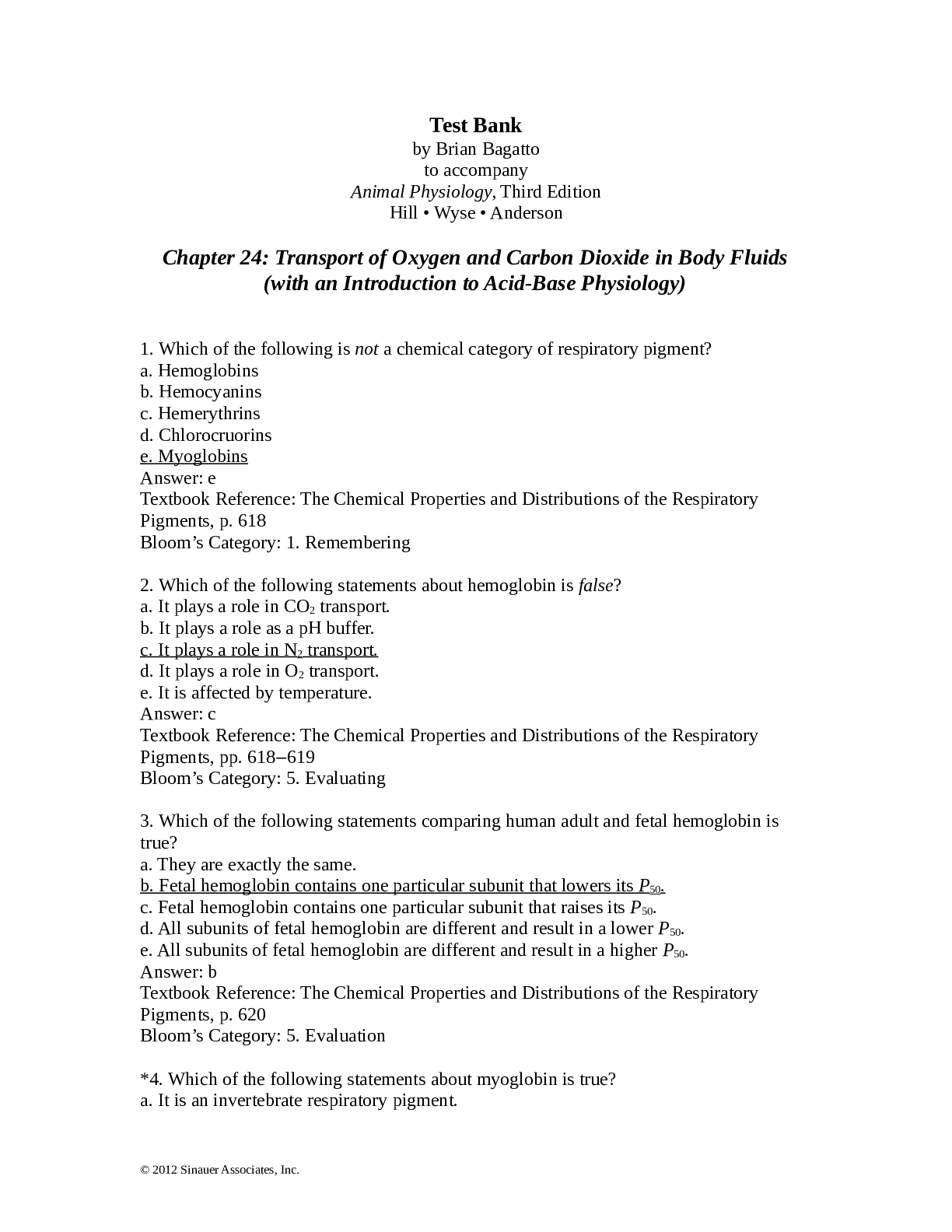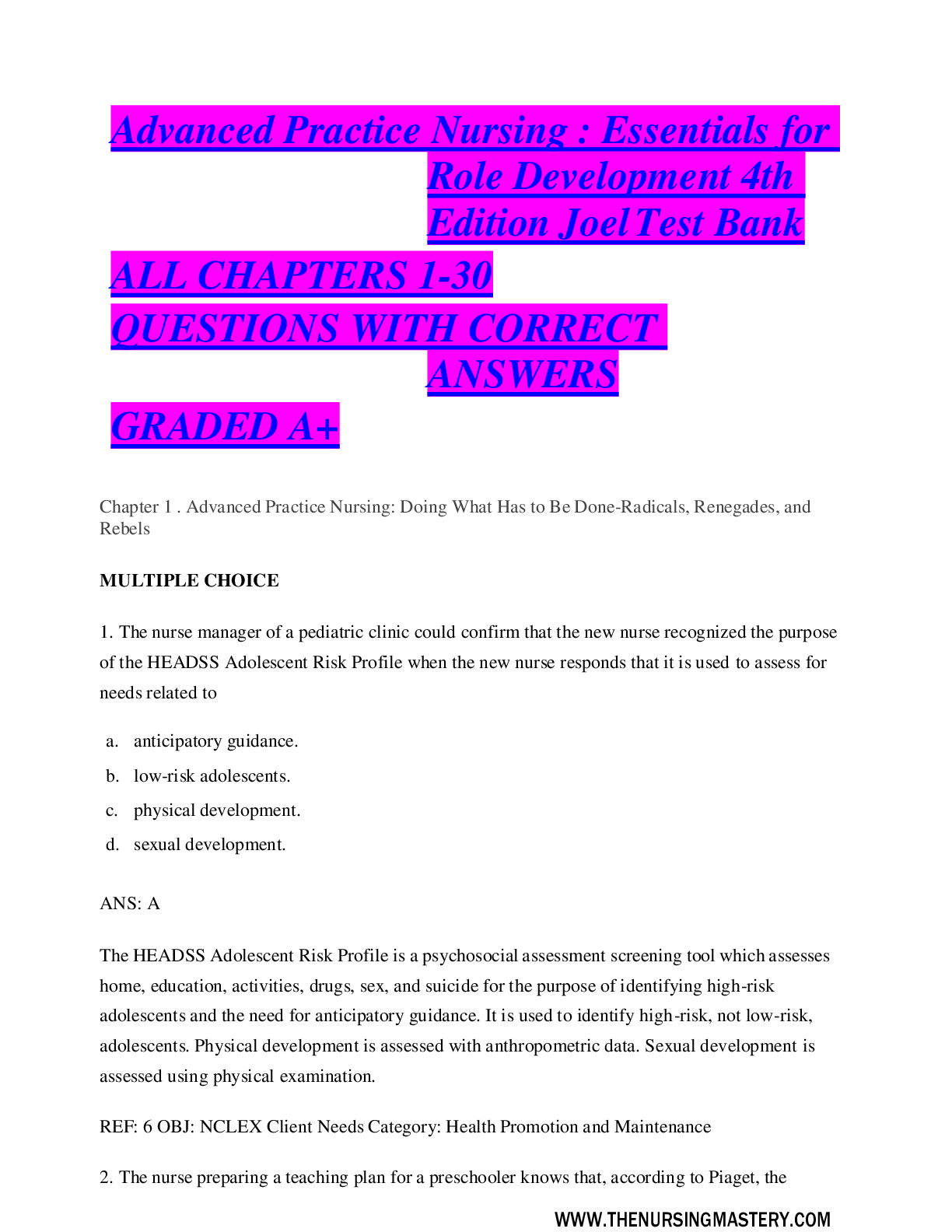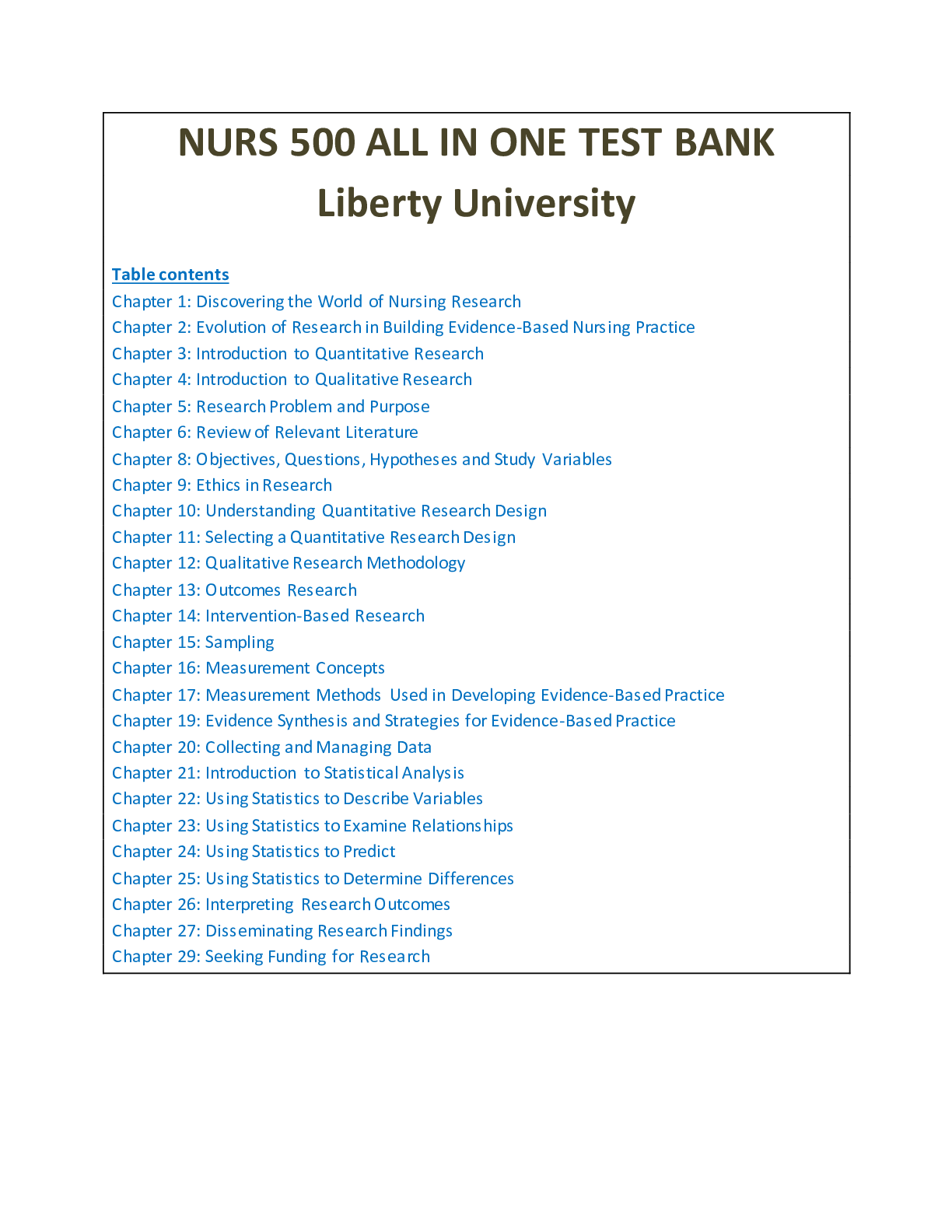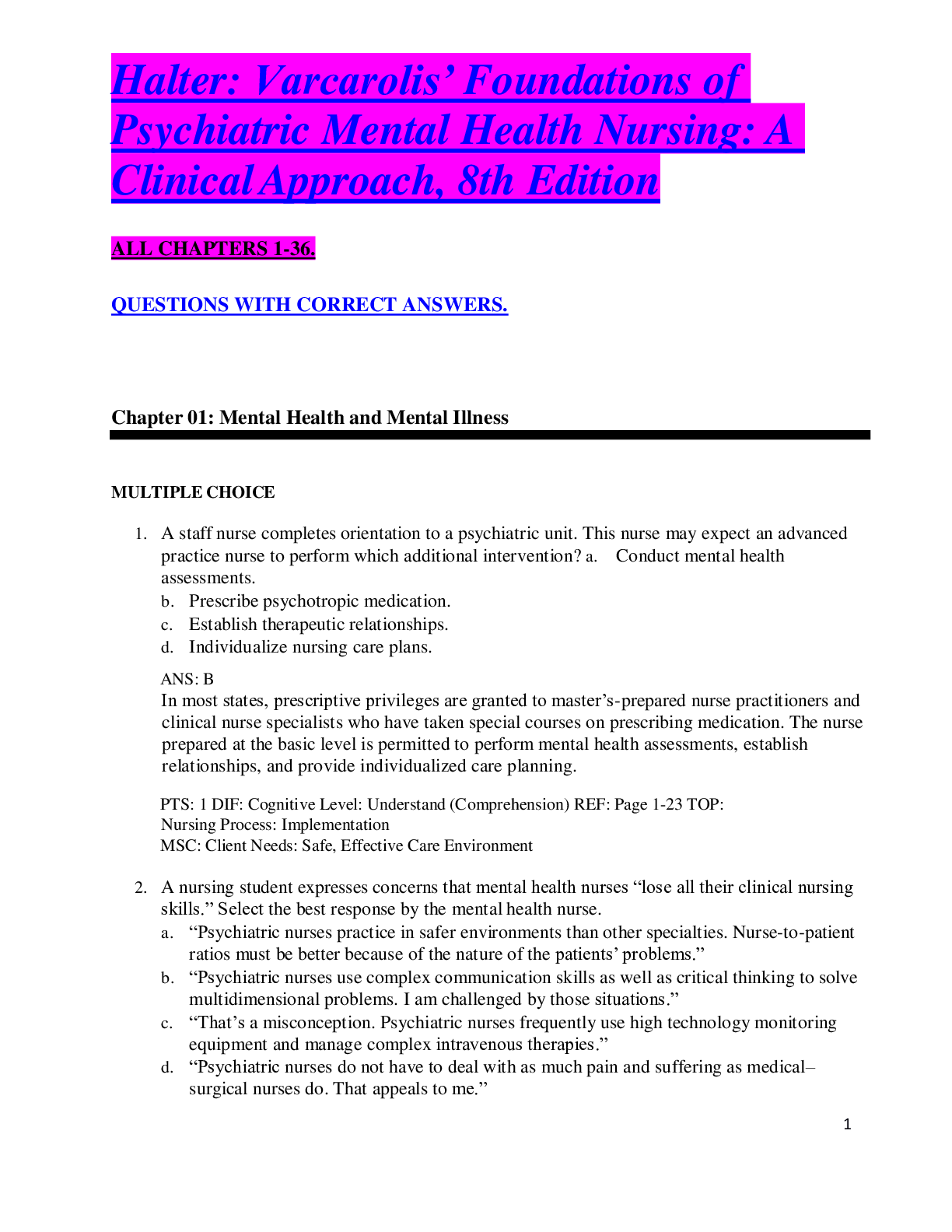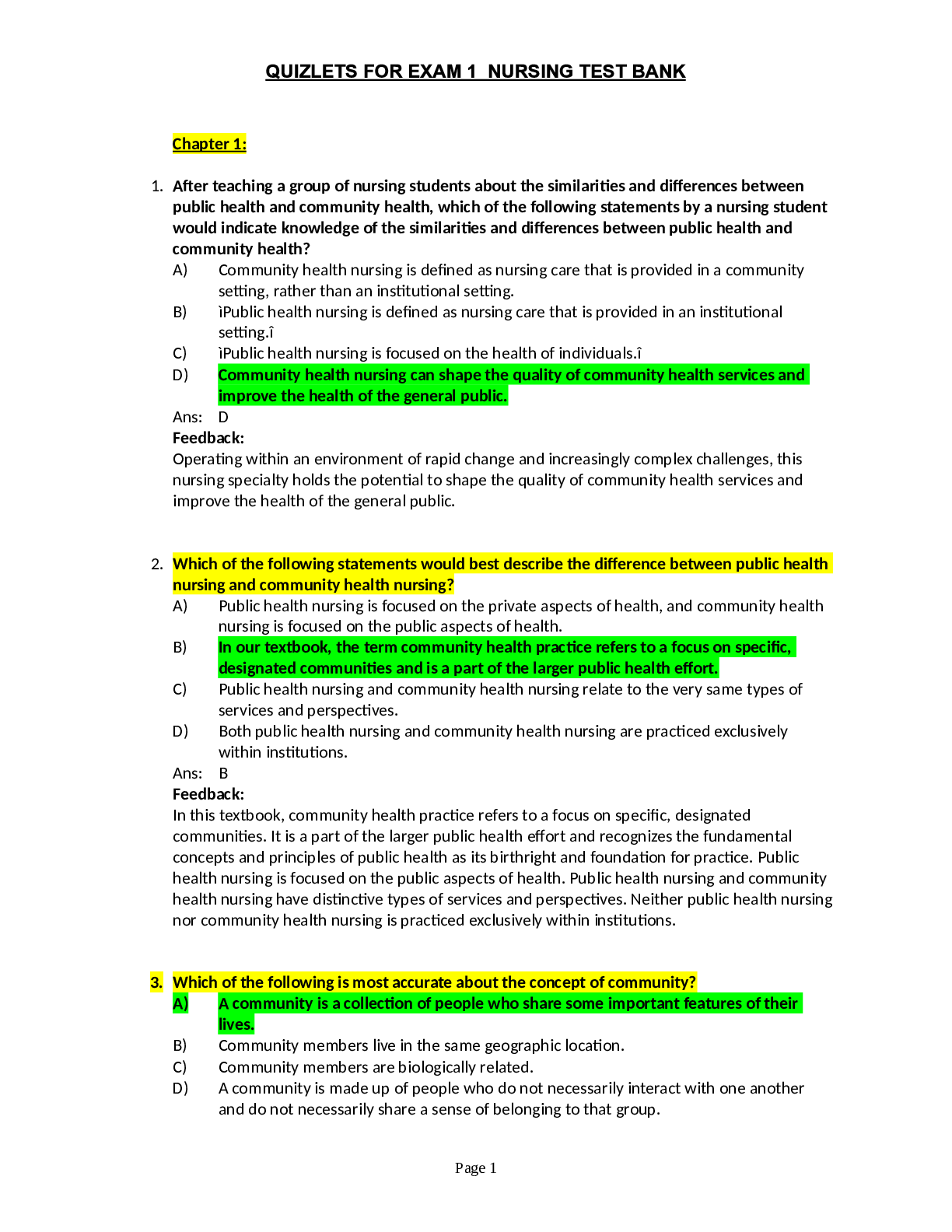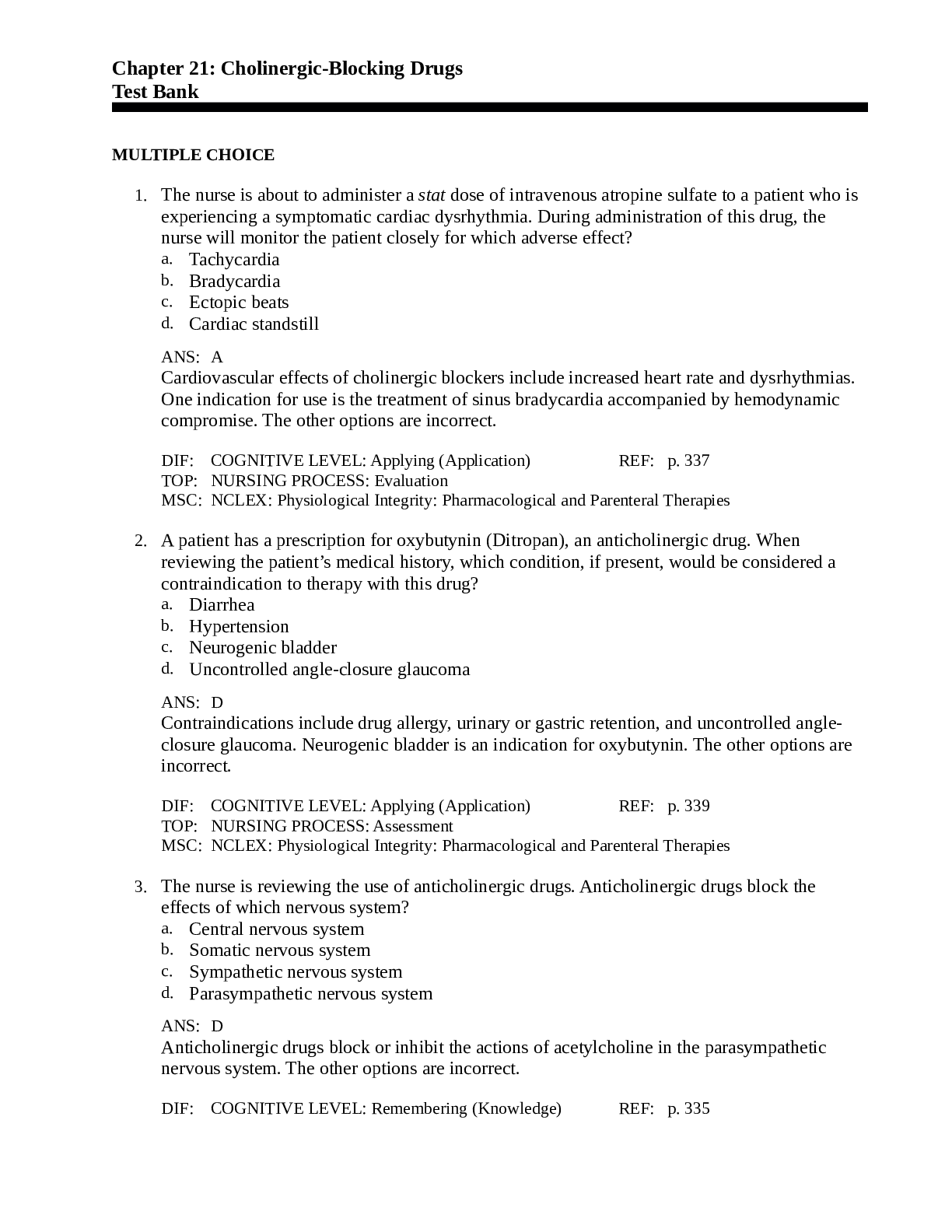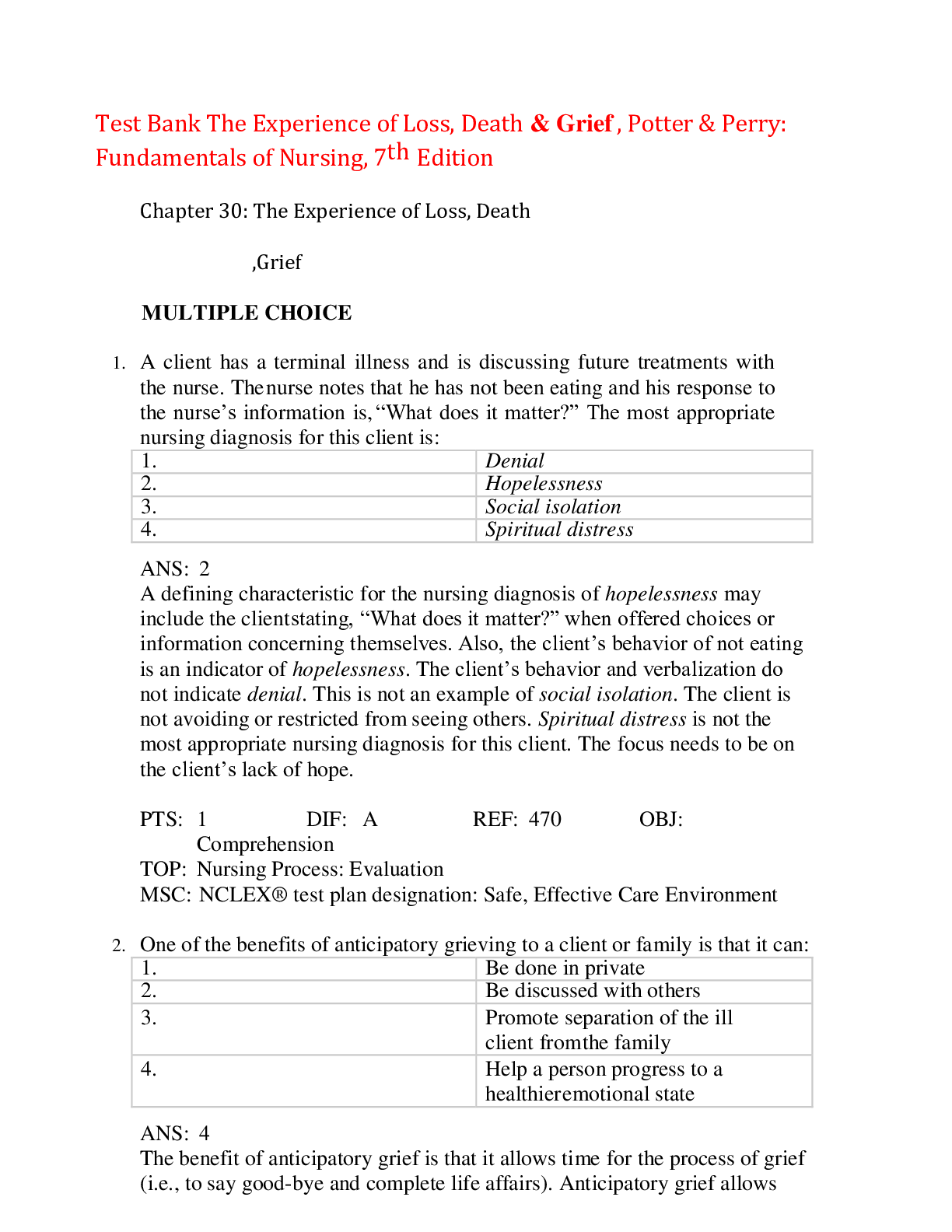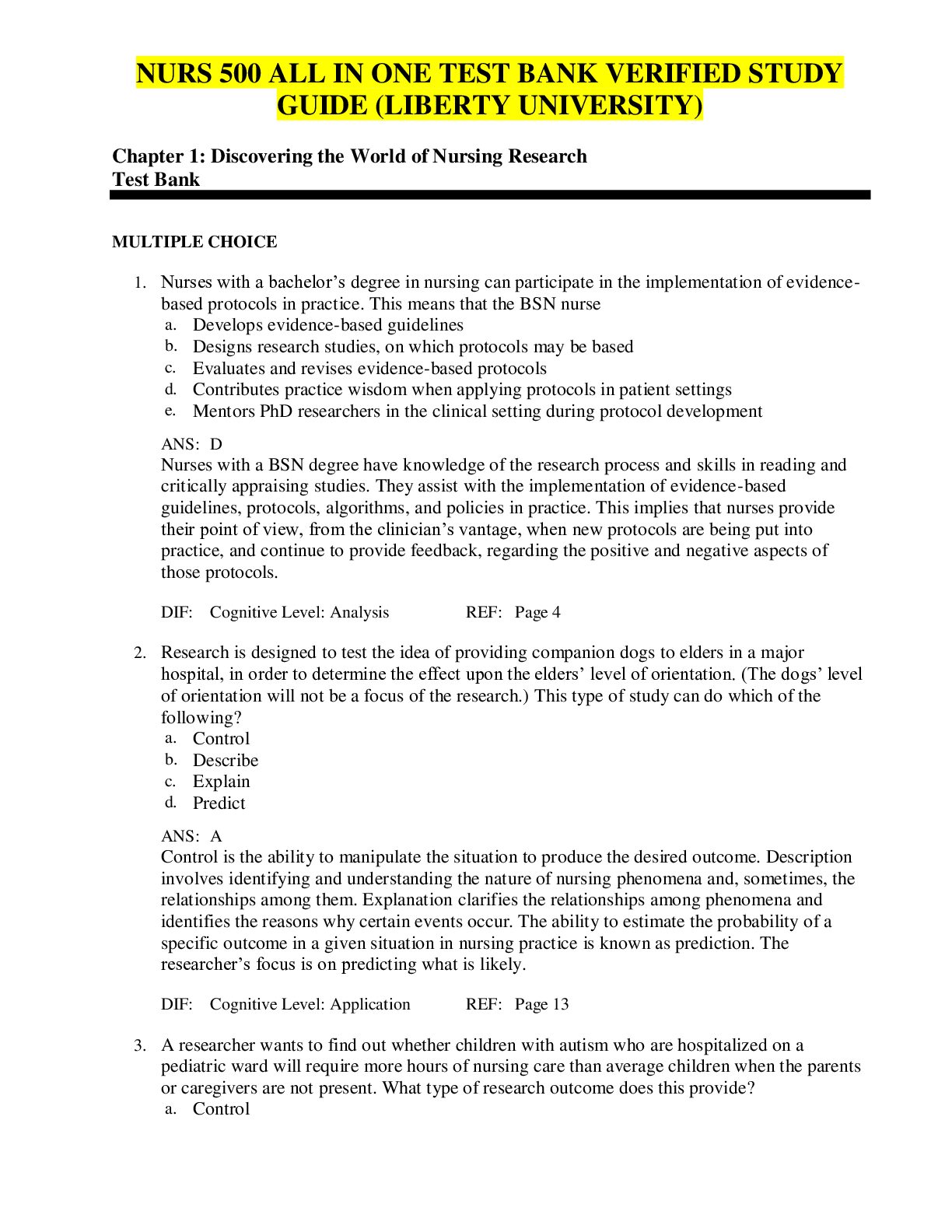*NURSING > TEST BANK > nurs 500 ALL IN ONE TEST BANK chapters 1 to 29 questions with correct answers for assured pass**DOWN (All)
nurs 500 ALL IN ONE TEST BANK chapters 1 to 29 questions with correct answers for assured pass**DOWNLOAD TO GET A**
Document Content and Description Below
Chapter 1: Discovering the World of Nursing Research Test Bank MULTIPLE CHOICE 1. Nurses with a bachelor’s degree in nursing can participate in the implementation of evidence- based protoco... ls in practice. This means that the BSN nurse a. Develops evidence-based guidelines b. Designs research studies, on which protocols may be based c. Evaluates and revises evidence-based protocols d. Contributes practice wisdom when applying protocols in patient settings e. Mentors PhD researchers in the clinical setting during protocol development DIF: Cognitive Level: Analysis REF: Page 4 2. Research is designed to test the idea of providing companion dogs to elders in a major hospital, in order to determine the effect upon the elders’ level of orientation. (The dogs’ level of orientation will not be a focus of the research.) This type of study can do which of the following? a. Control b. Describe c. Explain d. Predict DIF: Cognitive Level: Application REF: Page 13 3. A researcher wants to find out whether children with autism who are hospitalized on a pediatric ward will require more hours of nursing care than average children when the parents or caregivers are not present. What type of research outcome does this provide? a. Control b. Description c. Explantation d. Prediction DIF: Cognitive Level: Application REF: Page 16 4. A researcher who desires to determine the cause-and-effect relationship between requiring that all children under the age of 8 will ride in special care harnesses and the subsequent rate of children’s spinal cord injury will consequently utilize which form of nursing research? a. Descriptive research b. Outcomes research c. Qualitative research d. Quantitative research DIF: Cognitive Level: Application REF: Page 3 5. Despite the presence of an intraventricular drain, the intracranial pressure of an ICU neuro patient remains increased. The nurse recalibrates the machine, makes sure the monitor is on the same level as the drain, checks all connections, and then notifies the physician, who comes to the unit and inserts a new drain. What type of reasoning prompts the nurse to recalibrate, ensure proper placement, and check connections? a. Abstract reasoning b. Concrete thinking c. Logistic reasoning d. Reality testing DIF: Cognitive Level: Application REF: Page 6 6. A nurse with considerable clinical expertise develops a policy for managing agitated patients in the emergency department. The resultant policy emanates from a. Abstract reasoning b. Concrete thinking c. Logistic reasoning d. Reality testing DIF: Cognitive Level: Application REF: Page 7 7. A nurse with considerable clinical expertise develops a policy for managing agitated patients in the emergency department. The type of reasoning the nurse uses to do this is reasoning. a. Problematic b. Operational c. Logistic d. Inductive DIF: Cognitive Level: Synthesis REF: Page 7 8. What is the best explanation of intuition that forms a legitimate source of knowledge in nursing? a. It is based on knowledge thoroughly incorporated into thought but seldom articulated. b. It is based on a gift from the universe and should be honored when it arrives. c. It is never inaccurate. d. It is a revisiting of old knowledge, accompanied by deep reflection. DIF: Cognitive Level: Application REF: Page 5 9. Why is operational reasoning necessary for research? a. Abstract concepts are of no use to nursing. b. Standard interventions are obtained from operational reasoning. c. It allows the researcher to measure the concepts studied. d. It facilitates the researcher’s rapport with families. DIF: Cognitive Level: Application REF: Page 6 MULTIPLE RESPONSE 1. What are the connections between evidence-based practice and nursing research? (Select all that apply.) a. Evidence-based care cannot be provided to patients without the nurse understanding something of research. b. A synthesis of current research within an area of nursing is used to improve care in that area. c. All patients with a given diagnosis should be cared for based solely on research knowledge. d. Nursing diagnosis and management depend on a practitioner’s exploration of best research evidence. e. Nursing research provides evidence that allows us each to practice with the same style and capability. DIF: Cognitive Level: Analysis REF: Page 11 2. What is the hospitalized patient’s place in evidence-based practice? (Select all that apply.) a. The patient is the recipient of the total of formal research evidence and the nurse’s practice wisdom, and these represent the patient’s care plan. b. The patient brings values to the clinical encounter, which the nurse considers in providing evidence-based care. c. The patient provides a valuable source of knowledge, since each patient cared for contributes to the nurse’s total practice wisdom. d. The patient is the focus of research. The patient serves both as a recipient of evidence-based research and the subject of future evidence, based on data collected now from the patient. e. The patient may always refuse to participate—in evidence-based care, in therapies, in research participation—and this refusal must be honored. DIF: Cognitive Level: Analysis REF: Page 11 3. In nursing mentorship, as opposed to authority, the novice nurse fills which of the following roles? (Select all that apply.) a. Counselor b. Student c. Sponsor d. Disciplinarian e. Teacher f. Questioner g. Apprentice DIF: Cognitive Level: Analysis REF: Page 10 4. How are dialectic reasoning and holistic practice similar? (Select all that apply.) a. They are both based on intuition, not facts. b. They both consider the whole, rather than one part of the picture. c. Dialectic reasoning emphasizes truth and holistic practice accepts untruth. d. They both ignore the main idea or diagnosis and concentrate on different entities. e. They both honor context and the interactions among ideas and people. f. They both break down concepts into understandable parts. g. Dialectic reasoning can be used to validate a study design, whereas holistic practice does not contribute to research. DIF: Cognitive Level: Synthesis REF: Page 6 5. Which of the following statements synopsize the relationship between research and practice? (Select all that apply.) a. Practice limits nursing research to issues that are client-centered. b. Research participation helps nurses to meet re-licensure requirements for evidence- based practice. c. Research knowledge, combined with experiential wisdom, constitutes the base for practice. d. Research emphasizes what can be done in practice, rather than what has been done in practice. ...................................................................................continued................................................................................. [Show More]
Last updated: 1 year ago
Preview 1 out of 270 pages
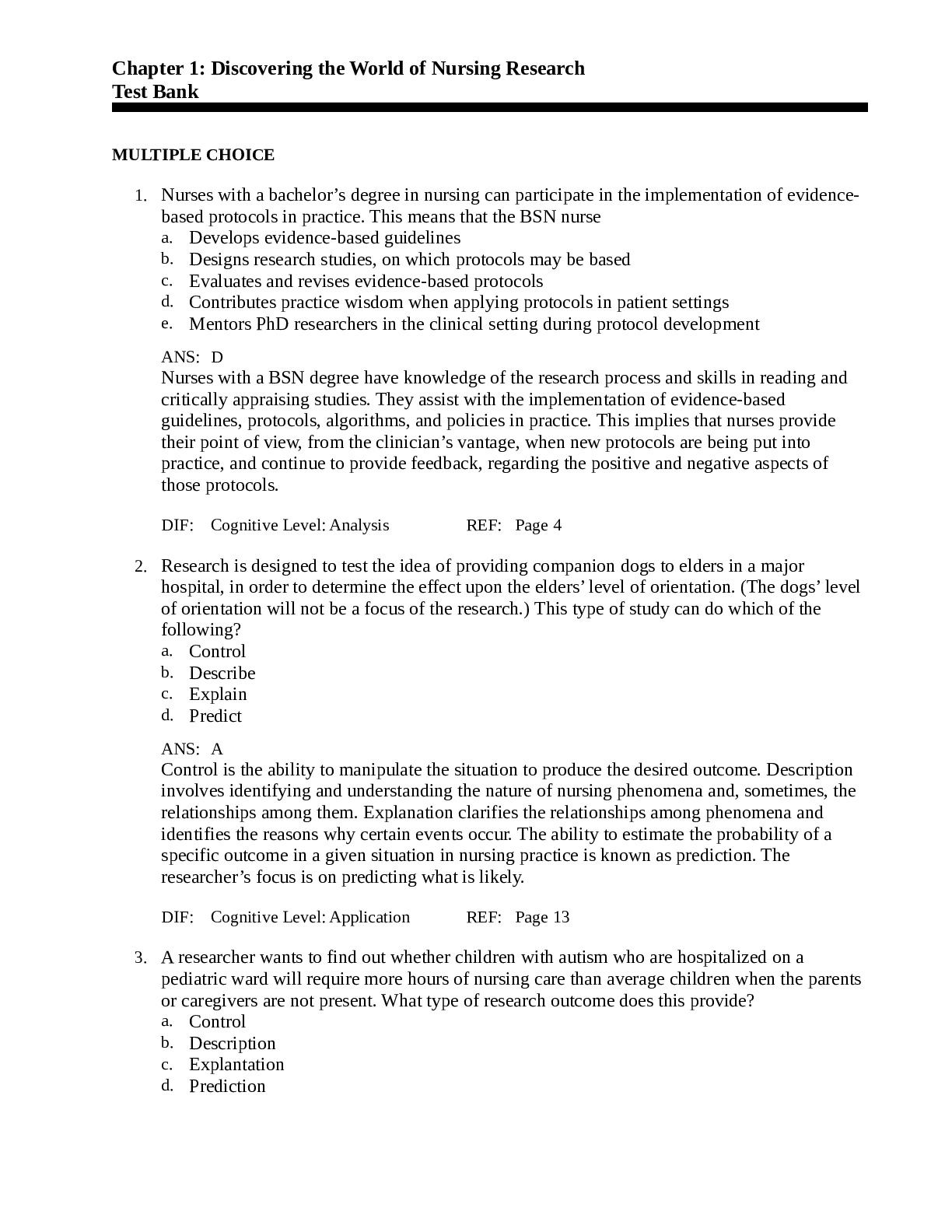
Reviews( 0 )
Document information
Connected school, study & course
About the document
Uploaded On
Oct 01, 2021
Number of pages
270
Written in
Additional information
This document has been written for:
Uploaded
Oct 01, 2021
Downloads
0
Views
68


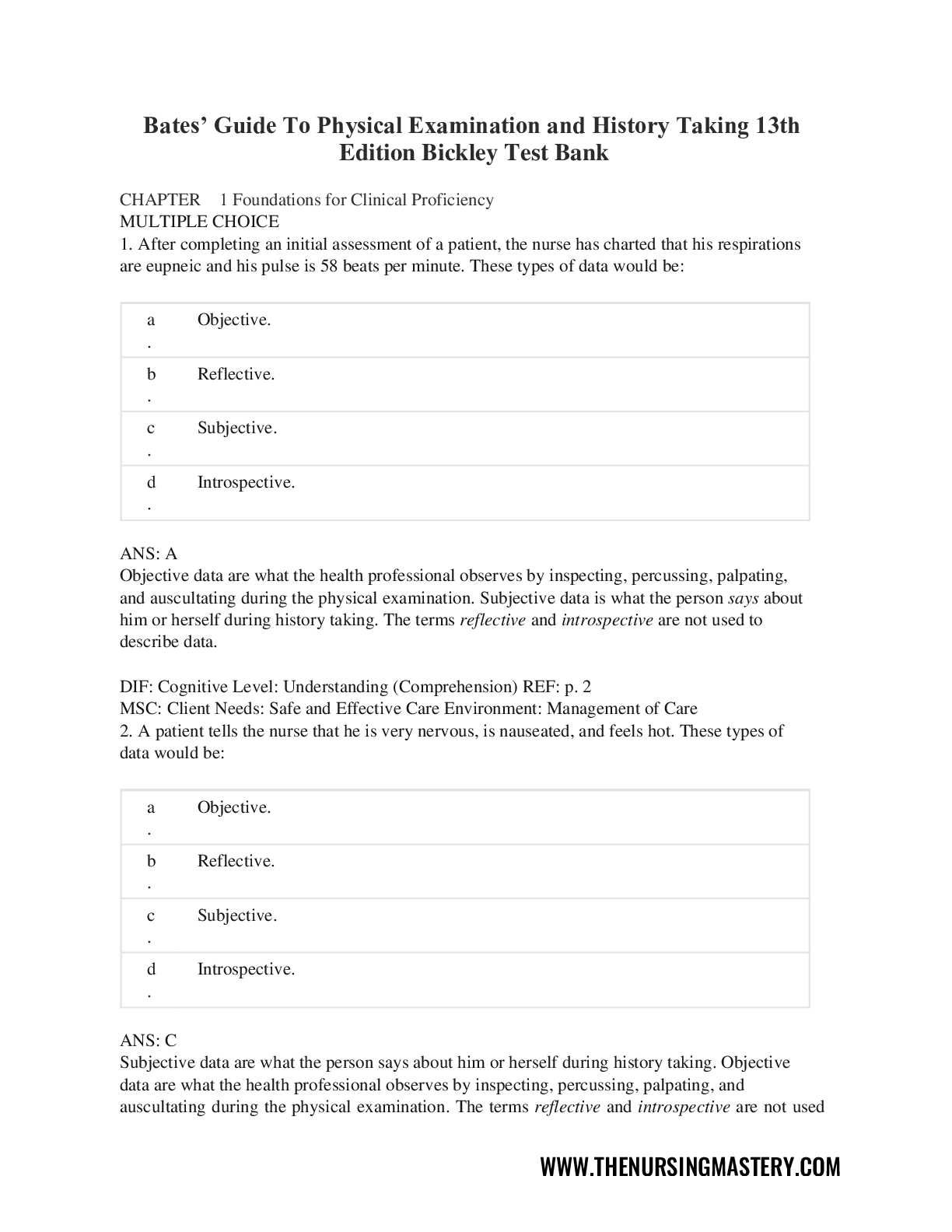
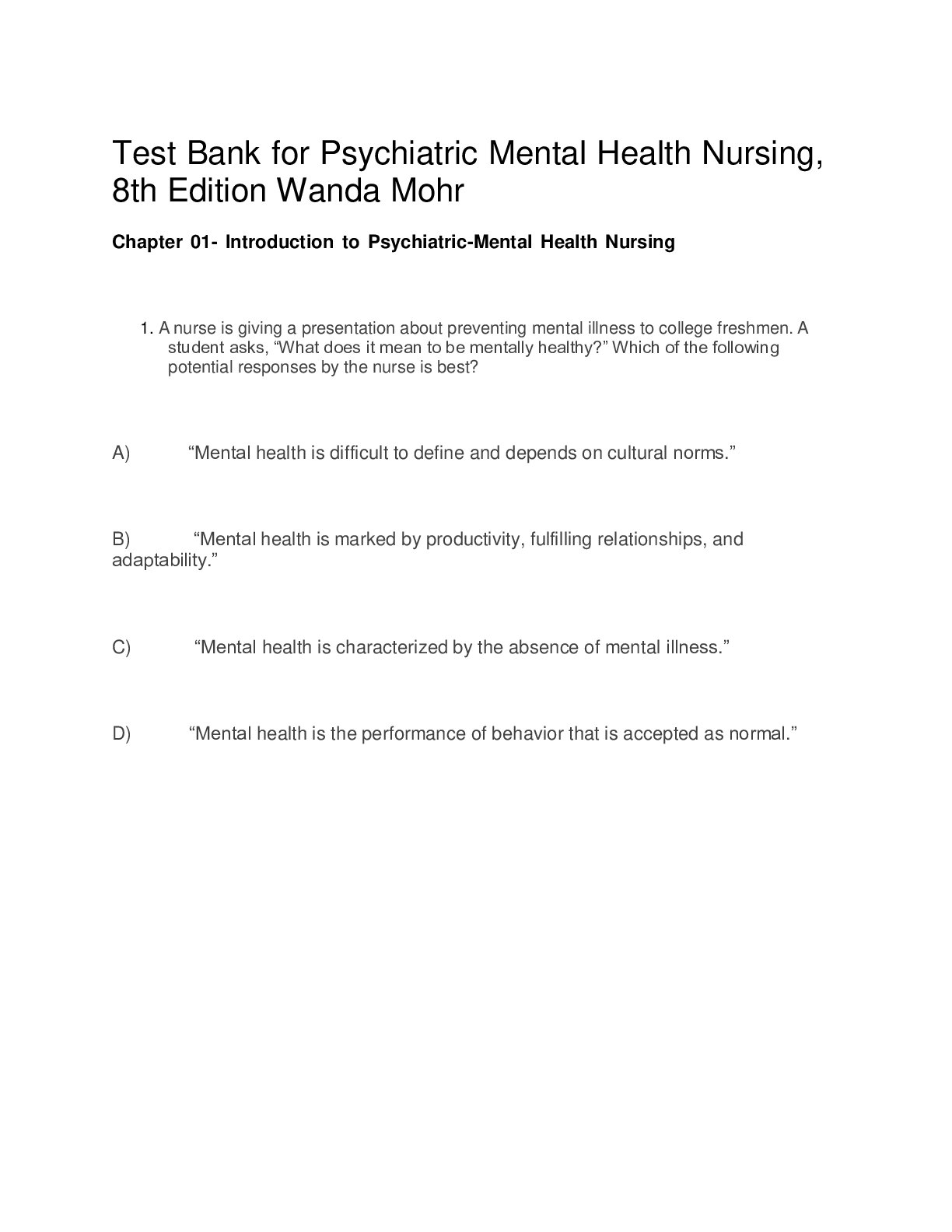
.png)

